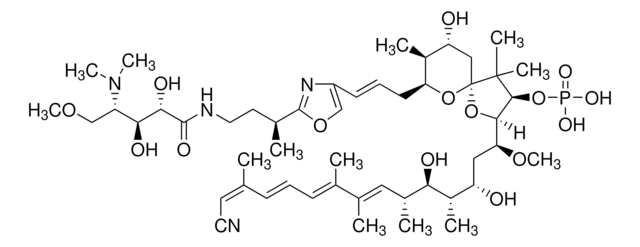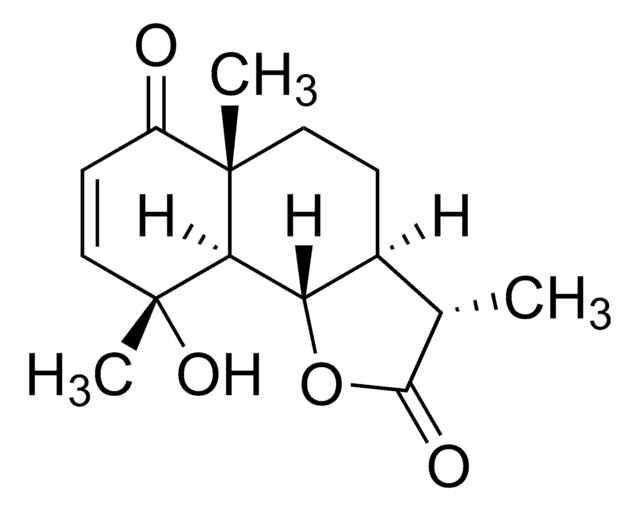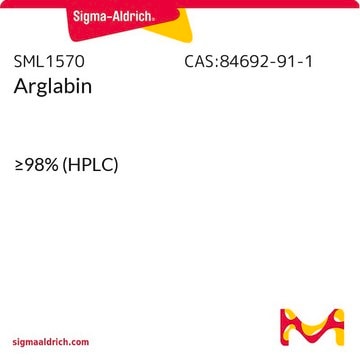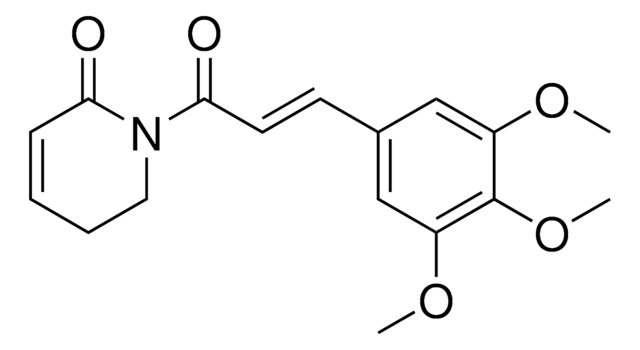P0667
Parthenolide
≥98% (HPLC)
About This Item
Produits recommandés
Pureté
≥98% (HPLC)
Forme
powder
Pf
115-116 °C (lit.)
Température de stockage
2-8°C
Chaîne SMILES
C/C(CC[C@]12[H])=C/CC[C@]3(C)[C@H](O3)[C@]1(OC(C2=C)=O)[H]
InChI
1S/C15H20O3/c1-9-5-4-8-15(3)13(18-15)12-11(7-6-9)10(2)14(16)17-12/h5,11-13H,2,4,6-8H2,1,3H3/b9-5-/t11-,12-,13+,15+/m0/s1
Clé InChI
KTEXNACQROZXEV-ZRPLFPEYSA-N
Informations sur le gène
human ... ELA2(1991) , IKBKG(8517) , NFKB1(4790) , NKAP(79576) , NKRF(55922)
Vous recherchez des produits similaires ? Visite Guide de comparaison des produits
Application
- in the crystallization with vasohibin 1 (VASH1) to study tubulin detyrosination inhibition
- as an inhibitor of nuclear factor κ-light-chain-enhancer of activated B cells (NF-κB) and signal transduction and activation of transcription (STAT) inhibitor to study its effects on the cytoadhesion of CD36-binding Plasmodium falciparum-infected erythrocytes (IECD36)
- as a lipophilic agent to study its effects on the production of interleukin?13 and interferon?γ by peripheral blood-derived CD8+ T cells
Actions biochimiques/physiologiques
Autres remarques
Mention d'avertissement
Warning
Mentions de danger
Conseils de prudence
Classification des risques
Skin Sens. 1
Code de la classe de stockage
11 - Combustible Solids
Classe de danger pour l'eau (WGK)
WGK 3
Point d'éclair (°F)
Not applicable
Point d'éclair (°C)
Not applicable
Équipement de protection individuelle
Eyeshields, Gloves, type N95 (US)
Certificats d'analyse (COA)
Recherchez un Certificats d'analyse (COA) en saisissant le numéro de lot du produit. Les numéros de lot figurent sur l'étiquette du produit après les mots "Lot" ou "Batch".
Déjà en possession de ce produit ?
Retrouvez la documentation relative aux produits que vous avez récemment achetés dans la Bibliothèque de documents.
Les clients ont également consulté
Articles
Chronic inflammation is an underlying factor in the development and progression of many of the chronic diseases of aging, such as arthritis, atherosclerosis, diabetes, and cancer.
Cancer stem cell media, spheroid plates and cancer stem cell markers to culture and characterize CSC populations.
Cancer stem cell media, spheroid plates and cancer stem cell markers to culture and characterize CSC populations.
Cancer stem cell media, spheroid plates and cancer stem cell markers to culture and characterize CSC populations.
Notre équipe de scientifiques dispose d'une expérience dans tous les secteurs de la recherche, notamment en sciences de la vie, science des matériaux, synthèse chimique, chromatographie, analyse et dans de nombreux autres domaines..
Contacter notre Service technique

